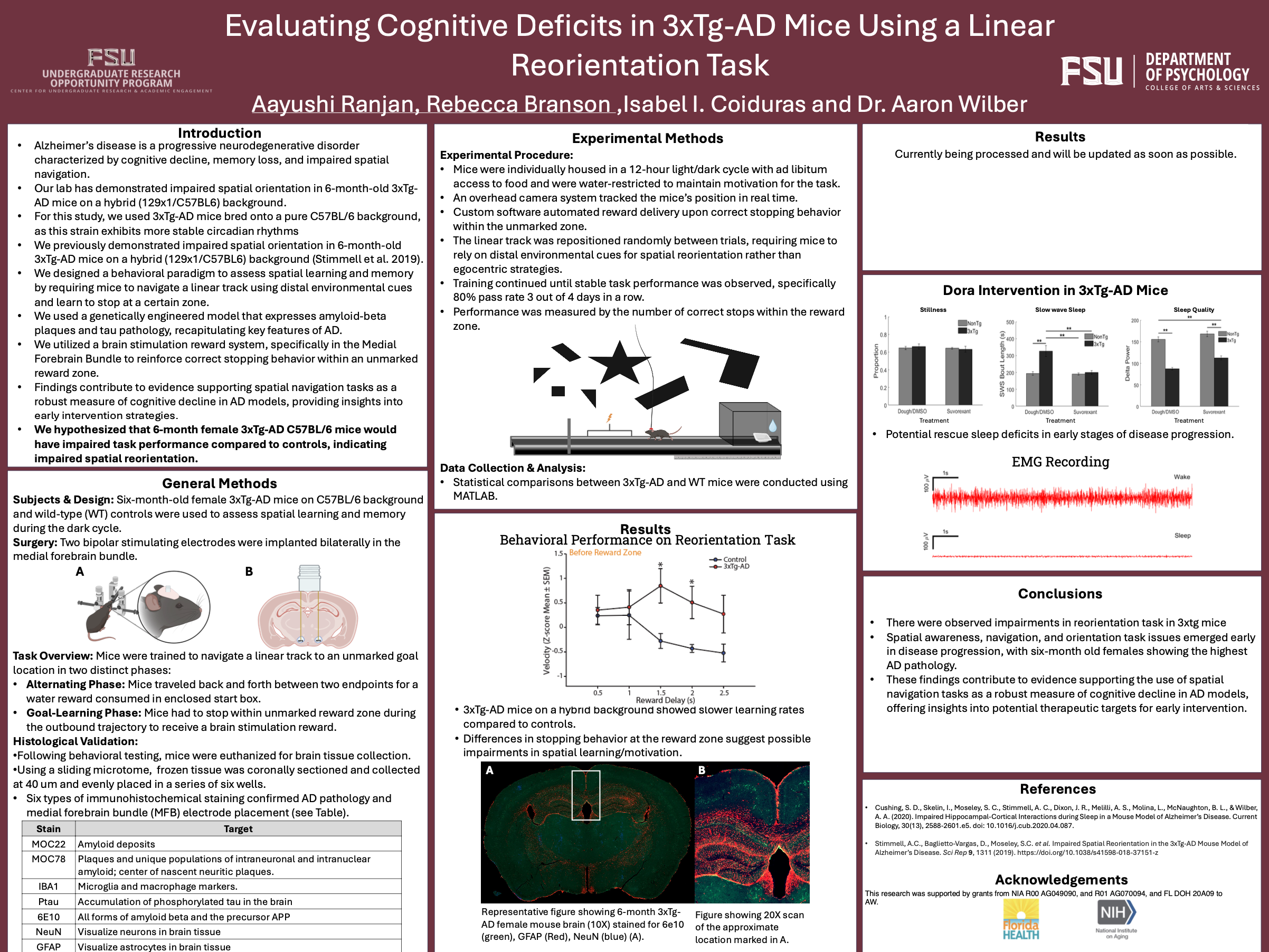Research Symposium
25th annual Undergraduate Research Symposium, April 1, 2025
Rebecca Branson Poster Session 2: 10:45 am - 11:45 am/ Poster #51

BIO
I am a sophomore double majoring in Psychology and Social Work. The Undergraduate Research Opportunity Program has allowed me to immerse myself in my research and has provided me with invaluable connections during my undergraduate career. I intend to continue down the path of the Alzheimer's research I conducted, as I feel it is a fascinating and growing area that will allow me to contribute to a research topic I am passionate about.
Evaluating Cognitive Deficits in 3xTg-AD Mice Using a Linear Reorientation Task
Authors: Rebecca Branson, Aaron WilberStudent Major: Psychology/Social Work
Mentor: Aaron Wilber
Mentor's Department: Psychology Mentor's College: Arts and Sciences Co-Presenters: Aayushi Ranjan
Abstract
Alzheimer’s disease (AD) is a progressive neurodegenerative disorder characterized by cognitive decline, including impairments in spatial orientation. We observed impaired spatial orientation in genetically engineered 6-month-old 3xTg-AD mice on a hybrid (129x1/C57BL6) background. However, we required mice on a pure C57BL/6 background due to their more robust circadian rhythms. This study investigates cognitive deficits using a linear orientation task to assess spatial learning and memory. 3xTg-AD and C57BL/6 (wild-type) control mice were trained to navigate a linear track to an unmarked location. First, mice alternated back and forth on the track for a water reward in an enclosed start box. Then, they learned to stop in an unmarked reward zone during the outbound trajectory. Live tracking software automatically delivered a brain stimulation reward when mice stopped for a sufficient period. The track’s start position changed each trial, requiring mice to use distal cues for reorientation. We hypothesized that 6-month-old female 3xTg-AD C57BL/6 mice would show impaired task performance, indicating spatial reorientation deficits. Histological analysis confirmed medial forebrain bundle placement and assessed AD pathology. Immunohistochemical staining revealed amyloid-beta plaques and tau pathology in AD mice. Once sufficient data is collected, we will correlate pathology levels with behavioral impairments, expecting pathology density in the dorsal subiculum to correlate with task performance. These findings contribute to evidence supporting the use of spatial navigation tasks as a robust measure of cognitive decline in AD models, offering insights into potential therapeutic targets for early intervention.
Keywords: Alzheimers, Neuroscience, Spatial orientation


